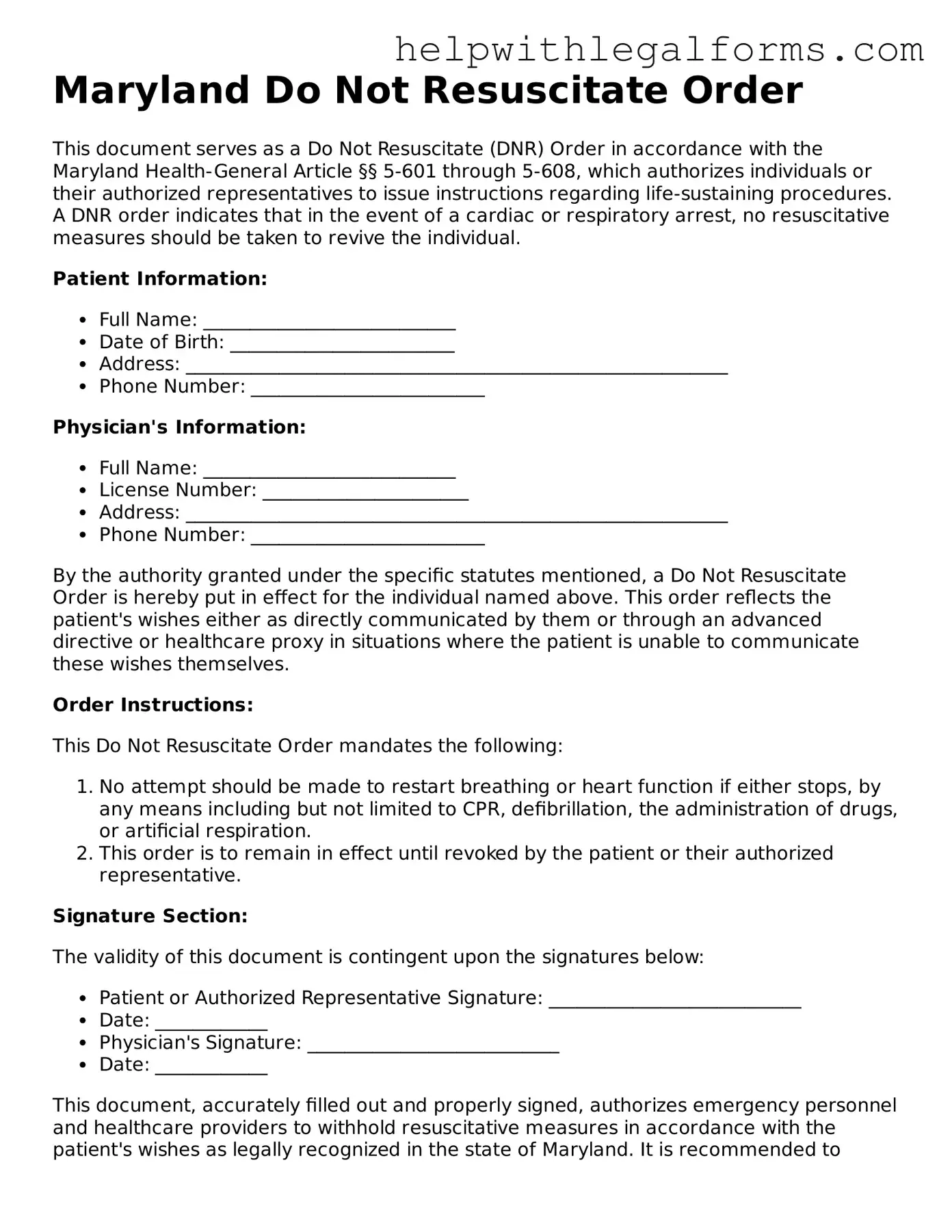What is a Do Not Resuscitate Order (DNR) form in Maryland?
A Do Not Resuscitate Order form in Maryland is a legal document that instructs medical personnel not to perform CPR (cardiopulmonary resuscitation) if a person's breathing stops or if their heart stops beating. It is used by individuals who do not wish to have these life-saving measures taken in the event of a medical emergency.
Who can request a DNR order in Maryland?
In Maryland, any competent adult can request a DNR order for themselves. A legal guardian or healthcare proxy can also request a DNR order on behalf of someone who is not able to make medical decisions for themselves.
How do I obtain a DNR order in Maryland?
To obtain a DNR order in Maryland, you must consult with your healthcare provider. The healthcare provider will discuss the implications and ensure you understand the decision. If you decide to proceed, the healthcare provider will prepare the DNR order and sign it.
Does the DNR order need to be notarized or witnessed in Maryland?
No, the DNR order in Maryland does not need to be notarized. However, it must be signed by your healthcare provider to be valid.
Where should I keep my DNR order?
Your DNR order should be easily accessible to emergency personnel. It’s recommended to keep it in a visible location, such as on your refrigerator, and to inform family members or housemates of its location. It's also wise to carry a copy with you or have an identification bracelet indicating you have a DNR order.
Can I change my mind after creating a DNR order in Maryland?
Yes, you can change your mind at any time. To cancel your DNR order, inform your healthcare provider, who can then help you rescind the order. It's also important to destroy any copies of the DNR order and notify anyone who was aware of its existence.
Is a DNR order the same as a living will?
No, a DNR order is not the same as a living will. A DNR order specifically addresses the use of CPR in emergency situations. A living will, on the other hand, provides more general instructions about a variety of medical treatments and interventions you do or do not want if you are unable to make decisions for yourself.
Does a Maryland DNR order work in other states?
While Maryland DNR orders are legally binding in Maryland, other states may have different regulations and requirements for recognizing DNR orders from out of state. It’s advisable to research and prepare according to the laws of any state you plan to visit or move to.
What happens if medical staff are not aware of my DNR order?
If medical staff are not aware of your DNR order, they may proceed with CPR or other life-saving measures in an emergency. This underscores the importance of making the DNR order readily available and communicated to your healthcare proxy, family members, and close friends.
Can a DNR order be included in medical alert systems or electronic medical records in Maryland?
Yes, a DNR order can be included in your electronic medical records or registered with medical alert systems. This helps ensure that the order is readily available to healthcare providers in emergency situations. Discuss this option with your healthcare provider.
